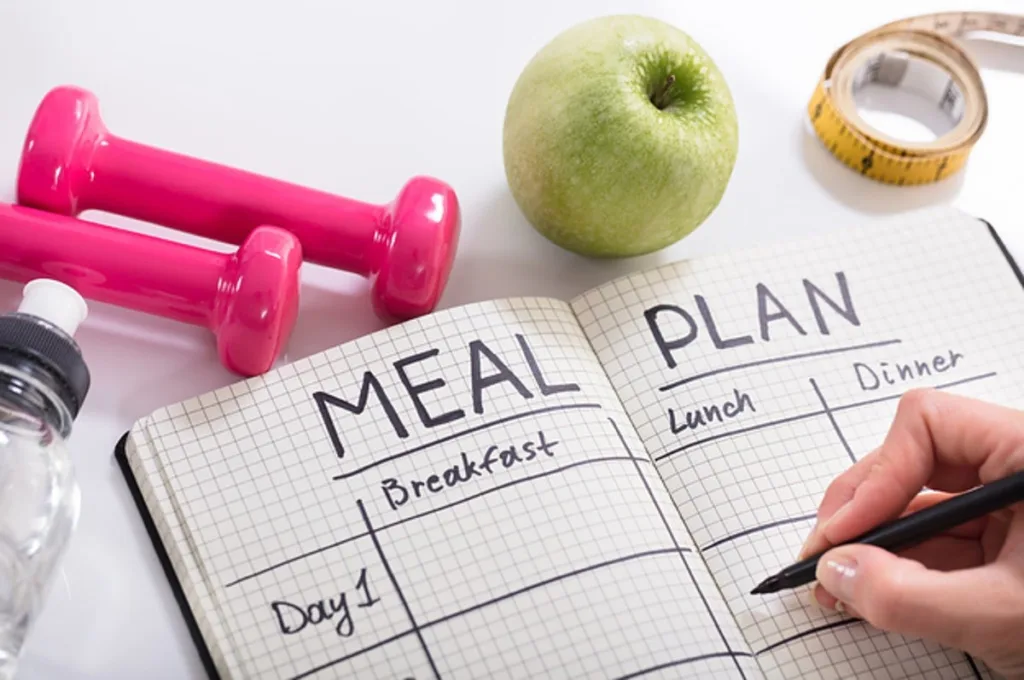Embarking on a weight loss journey can be a challenging yet rewarding attempt. One crucial factor to consider when formulating an effective weight loss plan is understanding and embracing your unique body type. Each individual’s body responds differently to diet and exercise, making a tailored approach more effective. In this article, we will explore how to customize a weight loss plan based on your body type, ensuring a more sustainable and successful path to achieving your fitness goals.

Body Type: Ectomorph (Slim and lean)
Ectomorphs are often referred to as “hard gainers” in the fitness community due to their difficulty in putting on muscle mass. They usually have a fast metabolism, which means they burn calories more efficiently than other body types. This metabolic characteristic contributes to their slim physique and can make it challenging for them to retain body fat and build muscle.
To overcome the challenges of being an ectomorph, individuals often need to adopt specific strategies, including a well-designed resistance training program that focuses on compound movements and progressive overload. Moreover, ectomorphs may need to pay close attention to their nutrition, ensuring they consume a sufficient number of calories and prioritize nutrient-dense foods. This might involve a higher intake of protein, healthy fats, and complex carbohydrates to support muscle growth and overall health. Slim and lean build often struggle to gain weight but might have stubborn areas of fat.
To support weight loss:
- Balanced Nutrition: Focus on a well-rounded diet with lean proteins, complex carbohydrates, and healthy fats. Eat smaller, frequent meals throughout the day.
- Resistance Training: Include strength training exercises to build lean muscle mass. This helps increase metabolism and enhances the body’s ability to burn calories.
- Cardiovascular Exercise: Engage in moderate-intensity cardio workouts like brisk walking, jogging, or cycling to burn extra calories.
- Hydration: Drink plenty of water to stay hydrated and support overall health.

Body Type: Mesomorph (Muscular and Athletic Build)
- High-Protein Diet: Prioritize protein-rich foods to support muscle maintenance and fat loss. Include lean meats, fish, eggs, and plant-based protein sources.
- Interval Training: Incorporate high-intensity interval training (HIIT) to boost metabolism and burn calories effectively.
- Strength Training: Continue with resistance training to maintain and enhance muscle mass. Include compound exercises like squats, and bench presses.
- Balanced Diet: Maintain a balanced diet with a mix of carbohydrates, proteins, and healthy fats.

Body Type: Endomorph (Round and Fuller Build)
- Round or Soft Body Shape: Endomorphs often have a rounder and softer physique, with a higher percentage of body fat. They may have a wider waist and hips compared to mesomorphs and ectomorphs.
- Gaining Fat Easily: One of the defining features of endomorphs is their tendency to gain weight and body fat more easily than other body types. They may find it challenging to lose weight and may need to pay close attention to their diet and exercise routine.
- Slower Metabolism: Endomorphs often have a slower metabolic rate, making it more difficult for them to burn calories efficiently. This can contribute to the ease with which they gain weight.
- Shorter Limbs: Endomorphs may have shorter arms and legs compared to mesomorphs and ectomorphs. This can contribute to the rounder appearance of their bodies.
- Wider Bone Structure: While not always the case; endomorphs may have a wider bone structure, particularly in the hips. This can influence the overall shape of their bodies.
- Challenges in Building Lean Muscle: Endomorphs may find it challenging to build lean muscle mass and may need to focus on a combination of strength training and cardiovascular exercise to achieve their fitness goals.
- Preferential Fat Storage: Endomorphs tend to store fat in the abdominal region, which can be a health concern as excess abdominal fat is associated with an increased risk of certain health conditions.
To support weight loss:
- Portion Control: Be mindful of portion sizes to regulate calorie intake. Focus on smaller, balanced meals throughout the day.
- Low-Glycemic Carbohydrates: Choose complex carbohydrates with a low glycemic index to help stabilize blood sugar levels. Include whole grains, vegetables, and legumes.
- Cardiovascular Exercise: Engage in regular, moderate-intensity cardio activities like walking, swimming, hiking to burn calories and improve cardiovascular health.
- Strength Training: Include resistance training to build lean muscle mass and boost metabolism.
- Hydration and Fiber: Drink plenty of water and incorporate high-fiber foods to promote satiety and support digestive health.

Nutrition:
Balanced Diet:
Prioritize a balanced and varied diet that includes a mix of lean proteins, whole grains, fruits, vegetables, and healthy fats. Aim for portion control to manage calorie intake effectively.
Hydration: Stay adequately hydrated by drinking plenty of water throughout the day. Water not only supports metabolic functions but also helps control hunger, preventing overeating.
Limit Processed Foods:
Regular Exercise Routine:
Incorporate a mix of cardiovascular exercises (such as brisk walking, jogging, or cycling) and strength training into your weekly routine. Aim for at least 150 minutes of moderate-intensity aerobic activity per week.
Strength Training: Include strength training exercises to build muscle mass. Muscles burn more calories at rest, contributing to a higher metabolism and enhanced fat loss.
Consistent Activity:

Helpful Practices:
- Stress Management: Chronic stress can contribute to weight gain. Incorporate stress-reducing practices such as meditation, deep breathing exercises to promote emotional well-being.
- Adequate Sleep: Ensure you get sufficient and quality sleep each night. Lack of sleep can disrupt hormonal balance, leading to increased cravings and decreased metabolism.
- Keep a Journal: Maintain a food and activity journal to track your daily habits. This helps identify patterns and areas for improvement.
- Set Realistic Goals: Establish achievable short-term and long-term goals. Celebrate small victories, and adjust your plan as needed to stay on track.

Customizing Your Plan:
Diet:
Consider consulting with a nutritionist to create a personalized meal plan that aligns with your body’s requirements. Designing a diet plan that accommodates different body types involves considering individual needs and goals. Focus on whole, nutrient-dense foods and stay mindful of portion sizes. This is a general guideline and may need to be adjusted based on personality requirements, here’s a general diet plan that can be adapted to different body types.

General Diet Plan for All Body Types:
1. Breakfast:
- Option 1: Whole-grain oatmeal with berries and a tablespoon of almond butter.
- Option 2: Greek yogurt parfait with granola, sliced bananas, and a drizzle of honey.
- Option 3: Scrambled eggs with spinach and whole-grain toast.
2. Mid-Morning Snack:
- Option 1: Handful of mixed nuts (almonds, walnuts, and pistachios).
- Option 2: Apple slices with a tablespoon of peanut butter.
- Option 3: Cottage cheese with pineapple chunks.
3. Lunch:
- Option 1: Grilled chicken or tofu salad with mixed greens, cherry tomatoes, cucumbers, and a vinaigrette dressing.
- Option 2: Quinoa bowl with roasted vegetables, chickpeas, and feta cheese.
- Option 3: Turkey or veggie wrap with whole-grain tortilla, lettuce, tomatoes, and hummus.
4. Afternoon Snack:
- Option 1: Carrot and cucumber sticks with hummus.
- Option 2: Low-fat Greek yogurt with a sprinkle of chia seeds.
- Option 3: A small smoothie with spinach, banana, and almond milk.
5. Dinner:
- Option 1: Baked salmon or tofu with sweet potato and steamed broccoli.
- Option 2: Stir-fried lean beef or tempeh with mixed vegetables and brown rice.
- Option 3: Lentil soup with a side of whole-grain bread.
6.Evening Snack (if needed):
- Option 1: A small bowl of berries.
- Option 2: Air-popped popcorn.
- Option 3: A piece of dark chocolate with a few almonds.


